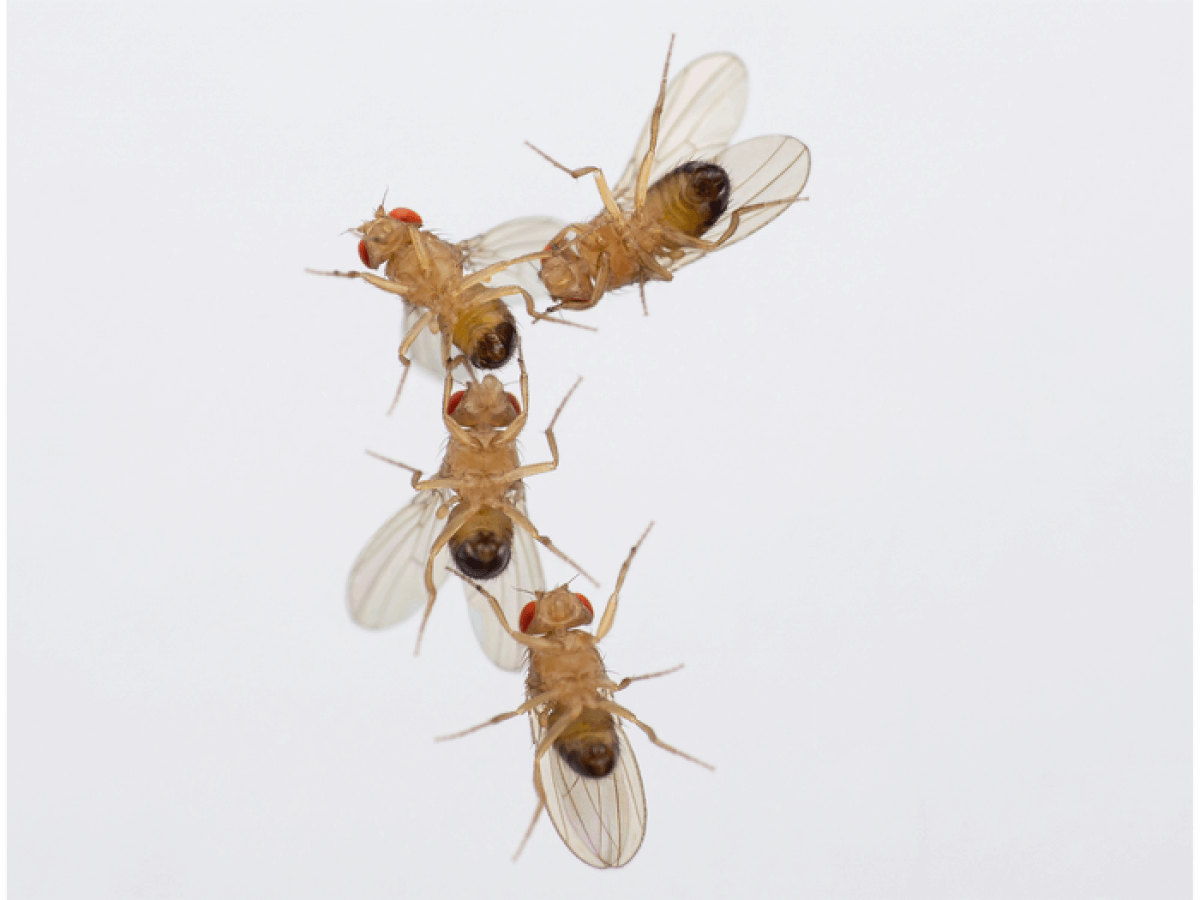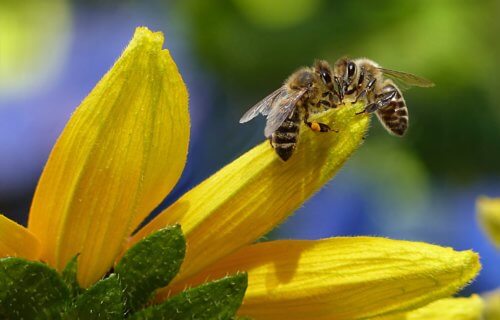JENA, Germany — Air pollution is fueling a worldwide decline in insects by turning off females and making males more interested in each other. Researchers from the Max Planck Institute for Chemical Ecology explain that high levels of ozone destroy odor molecules, or pheromones, that attract the opposite sex. Simply put, growing levels of air pollutants could lead to fewer new generations of bugs important to our ecosystem — like bees and ants.
“We already knew that environmental pollutants such as ozone and nitric oxide degrade floral scents, making flowers less attractive to their pollinators. Since compounds with carbon double bonds are particularly sensitive to ozone degradation, and almost all insect sex pheromones carry such double bonds, we wondered whether air pollution also affects how well insect females and males find and identify each other during mating,” says lead study author Markus Knaden, who heads the Odor-guided Behavior Group in the Department of Evolutionary Neuroethology, in a media release.
Known commonly as smog, ozone commonly develops in the atmosphere through emissions from traffic and industry. When gases from exhaust pipes and chimney stacks make contact with sunlight, they form toxic nitrogen oxides and volatile organic compounds. Experiments on fruit flies found exposing males to high levels of pollutants degraded their pheromones. Females became less interested and much slower to respond to courtship behavior.
Insects breathing in pollutants can’t tell males from females
What’s more, there was an increase in male bonding because without the chemical signals they became unable to differentiate other males from females. The authors point out levels of ozone in cities worldwide are often higher than those reached in the study.
“We knew that elevated ozone levels could affect insect mating systems because the breakdown of carbon double bonds, and thus pheromones, by oxidation is not rocket science in chemistry,” says Knaden and study first author Dr. Nanji Jiang.
“Nevertheless, we were shocked that even slightly elevated ozone concentrations had such strong effects on fly behavior. Actually, we initially wanted to focus on the interactions between males and females. We could explain that males started courting each other after a short ozone exposure, because they obviously could not distinguish ozonated males from females. However, we had not thought about this before. Therefore, we were quite puzzled by the behavior of the ozone-exposed males, which lined up in long courtship chains.”

This could lead to the extinction of several species
The decline of insect numbers is a major conservation concern in many countries, as numerous species are at risk of extinction. Many communicate using pheromones, chemical signals released into the air, which are particularly important for finding a mate. For example, female butterflies and moths use pheromones for attracting males over long distances.
However, it is unclear how ground-level ozone — a pollutant produced as a result of industrial emissions — may react with and damage these chemical signals. The researchers developed an ozone exposure system for flies that could mimic current airborne levels in summer. They had to create a precisely defined continuous airstream with precisely defined ozone levels.
“We therefore needed a technique that would allow us to measure even tiny amounts of pheromones on individual flies that had either been exposed to ozone or not prior to the measurements. To do this, we used what is known as a thermal desorption unit coupled to a gas chromatograph/mass spectrometer, which allowed us to measure tiny amounts of odors emitted by individual flies,” Jiang says, describing the technical challenges.
When the team exposed males to just 100 ppb (parts per billion) of ozone for two hours, pheromones decreased significantly compared to a control group. Researchers described their observations as “disturbing.” Consequently, elevated ozone levels not only led to females being less attracted to males, ozonated males were suddenly interested in their male counterparts.
This is a major problem for pollination
The team plans to study the effects of ozone on a broader range of insects, including moths, that usually follow pheromone plumes over long distances.
“We would like to find out, whether high levels of ozone lead to increased hybridization rates when closely related fly species share their habitat. Finally, chemical communication in insects is not restricted to mating behavior,” Knaden adds.
“All social insects like bees, ants, and wasps, use chemical cues to identify members of their colony. We also study whether the social structure within ant colonies is affected, when ants return from their foraging trips during which they became exposed to increased levels of pollutants. You don’t even want to envision what happens if social structures in ant colonies or beehives suddenly collapse because pheromone communication no longer works.”
High ozone levels are harmful to human health, the environment, and the world’s climate. Many indirect effects are still unclear. The current study provides an additional explanation as to why insect populations are declining dramatically worldwide, on top of the application of insecticides and destruction of habitats. If chemical communication is disrupted by pollutants in the air, they cannot reproduce at a sufficient rate.
This may also affect many pollinators, such as bees and butterflies. The fact that 80 percent of our crops need to be pollinated by insects makes it clear what scale this problem may take in the future.
The study is published in the journal Nature Communications.
South West News Service writer Mark Waghorn contributed to this report.

